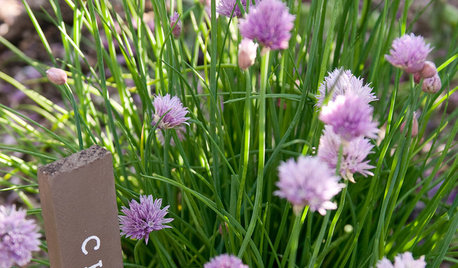Found first caterpiller on tomatos
Lynn Dollar
9 years ago
Related Stories

EDIBLE GARDENSSummer Crops: How to Grow Tomatoes
Plant tomato seedlings in spring for one of the best tastes of summer, fresh from your backyard
Full Story
LIFEKitchen Traditions: Tomato Season Meets a Family Legacy
Somewhere a Sicilian great-great-grandmother is smiling at a bowl of American-made sauce
Full Story
FRONT YARD IDEAS12 Surprising Features Found in Front Yards
Fire, water, edibles and wildlife habitats are just a few of the elements you can consider adding to your entryway landscape
Full Story
MOST POPULARFirst Things First: How to Prioritize Home Projects
What to do when you’re contemplating home improvements after a move and you don't know where to begin
Full Story
GARDENING GUIDES10 Easy Edibles for First-Time Gardeners
Focus on these beginner-friendly vegetables, herbs, beans and salad greens to start a home farm with little fuss
Full Story
FURNITURESecond-Life Sofas Show First-Rate Style
With unexpected upholstery, antique sofas can live happily in modern interiors
Full Story
KITCHEN DESIGNKitchen of the Week: Function and Flow Come First
A designer helps a passionate cook and her family plan out every detail for cooking, storage and gathering
Full Story
GARDENING GUIDESSimple Pleasures: Savor the First Spring Day in the Garden
How will you answer the call of the garden once the birds are chirping, the bulbs are blooming and the air is inviting?
Full Story
FARM YOUR YARDHouzz Call: Home Farmers, Show Us Your Edible Gardens
We want to see where your tomatoes, summer squashes and beautiful berries are growing this summer
Full Story
BEFORE AND AFTERSSee 6 Yards Transformed by Losing Their Lawns
Wondering whether a turf lawn is the best use of your outdoor space? These homeowners did, and they found creative alternatives
Full StoryMore Discussions






Okiedawn OK Zone 7
AmyinOwasso/zone 6b
Related Professionals
Tempe Landscape Architects & Landscape Designers · Citrus Heights Landscape Architects & Landscape Designers · Carson Landscape Architects & Landscape Designers · Fort Lee Landscape Architects & Landscape Designers · Severn Landscape Architects & Landscape Designers · Alamo Landscape Contractors · Eagle Landscape Contractors · Florham Park Landscape Contractors · Lewisville Landscape Contractors · New Braunfels Landscape Contractors · Waterford Landscape Contractors · Wethersfield Landscape Contractors · Dorchester Center Decks, Patios & Outdoor Enclosures · Boise Decks, Patios & Outdoor Enclosures · Centennial Decks, Patios & Outdoor EnclosuresLisa_H OK
ricman
Lynn DollarOriginal Author
Okiedawn OK Zone 7
Lisa_H OK
Okiedawn OK Zone 7
Lynn DollarOriginal Author
Okiedawn OK Zone 7